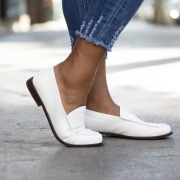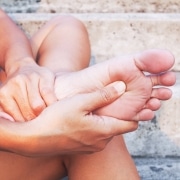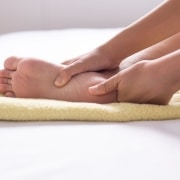What is a Foot Neuroma and How Can You Treat It?
A neuroma is a painful foot condition that develops between your toes. You may also hear your podiatrist in Austin, TX refer to a foot neuroma as a nerve tumor or simply a pinched nerve. Foot neuromas are a benign condition caused by an overgrowth of nerve tissues.
Symptoms and Causes of Foot Neuromas
The symptoms of neuromas sometimes mimic those of other food conditions, making it difficult to determine a diagnosis without visiting a podiatrist. The most common things to look for include:
- Pain in the ball of the foot when you apply pressure to it
- Pain towards the front of your foot and in between your toes
- Numbness and tingling in the ball of your foot
- Swelling between your toes
Foot neuromas are more common in women than men, mainly because women wear high heels and other types of shoes that can contribute to the problem. Be sure to wear shoes with low heels that provide your toes with adequate room to move to avoid developing neuromas. Look for shoes with laces or buckles that make it easy for you to adjust the fitting and avoid squeezing your feet too tightly. Other potential causes of foot neuromas include:
- Having flat feet or feet with high arches
- Repeated stress, such as a job that requires you to stand all day
- Trauma to the nerves of the foot
Your shoes should also have thick and shock-absorbent soles along with insoles to take pressure off the foot. Wearing additional padding in your shoes near the toe area can also help prevent nerve damage to the toes that results in neuromas.
This problem typically gets worse without treatment. Dr. Jeffrey Lamour will determine if you could benefit from custom orthotics in Austin, TX or any other remedies during your initial appointment.








